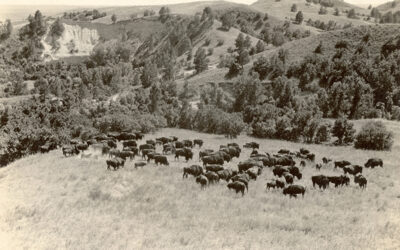According to the Niobrara Pioneer of December 28, 1876, local weather was appropriate for the Yuletide season. Snow on Christmas Eve “made Christmas appear more as if Santa Claus had really been in our midst with his ancient reindeers.” The Pioneer went on to describe the celebration held the evening of Christmas Day at nearby Creighton:
“Early Christmas evening teams could be seen coming from every direction to Creighton for the purpose of participating in the festival and Christmas tree, gotten up by the Sabbath School of this place. Soon after lamp light, the large and commodious school building was comfortably filled. The room was beautifully decorated with evergreen mottoes, wreathes, and flags; and the tree was a splendid one about 12 feet in height, decorated with flags. Notwithstanding the hard times the tree fairly groaned beneath its precious load. It was covered from top to bottom with beautiful presents.”
After a festive supper preparations were made for the introduction of Santa Claus. “Presently, jingling of bells were heard in the direction of the outer door. All eyes were peering anxiously in that direction. In he comes, in his usual antic style, and entertained the audience with art and humor for some time, and then called for a song from the School, which was given in appropriate [style] to the occasion.”
After presentation of a gift to A. McGill, superintendent of the sabbath school, there was a general distribution of gifts, with Santa Claus providing the celebrants with entertainment as well. “He complained fearfully of the coldness of the room, and wondered why we did not open the window. His suit was rather light for this time of the season consisting of a large buffalo over coat, mask, and about 40 pound weight of presents. Asked if he came from the South, he replied, no; he came direct from Bosting [Boston], via the new rail road from Sioux City to Ponca [Covington, Columbus & Black Hills Railroad, completed to Ponca in 1876] . . . .



